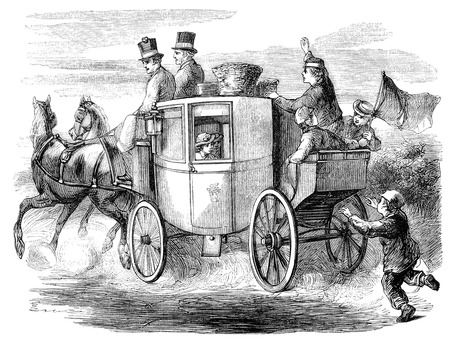
Very few directors were able to take the genre of Western film in a new direction at the beginning of its popularity. Up until the late 1930s, Western movies had a clichéd texture to them, which was often enshrined in the simple ideals of a predictable and campy storyline. But in 1939, John Ford released Stagecoach, and that all changed.
Taking place in the beautiful Monument Valley area of Arizona, Stagecoach helped to shape Western film into a more serious genre in a number of ways.
Stagecoach was a memorable film largely due to the cinematographic techniques that were used by Gregg Toland, who was known for his work on Orson Welles’ Citizen Kane. Toland used chiaroscuro lighting to create contrasts of dark and light throughout the film, and interesting close-ups on shadowed faces provided dramatization and humanity. Toland also used camera angles to his advantage when panning over the desert mesas and rugged mountain views of Monument Valley, making audiences feel as though they were right there in the action, which the film had in abundance.
While Stagecoach made some headway in the department of art direction, the movie has been criticized for portraying Native Americans as violent and vengeful, but also cunning and deceitful people. The actors who played the Apaches do not make their entrance until much later in the film, and when they were shown on screen, they were caught in seedy predicaments, such as when audiences were first introduced to the Native wife of the Mexican Innkeeper at Apache Wells. She ends up helping a band of other Mexican characters steal the backup horses of the Stagecoach, and she herself makes an escape with her husband’s own horse.
This typecasting of the Native American as uncivilized, unthinking, and merely “present” in a scene was typical for the American film industry at the time; accurate knowledge about Native Southwestern cultures rarely made it to the motion picture screen.
Instead, pervasive stereotypes were simply accepted because Hollywood didn’t know any better. The reactions of Native American actors to the realities of Hollywood would soon, however, leave an indelible mark on the industry in the form of advocacy.
The character arcs that John Ford developed in Stagecoach were by no means groundbreaking in the genre of Western film, but the contexts under which the audiences meet the characters, and how the characters interacted with each other, were considered influential. Ford placed characters of varying ranks and different sides of the law together in a stagecoach, where they had no choice but to communicate and interact with each other intimately. The “scorned prostitute,” the “good outlaw,” and the “drunk doctor” witnessed their lives overlap as they were forced to deal together with the conflict and strife that accompanied a journey into a strange civilization.
Kachina House is your repository for all things Native American. Discover our rich inventory of artifacts and art when you visit Sedona, or, check us out online today to leave us a review!


Thanks very much, Janet.